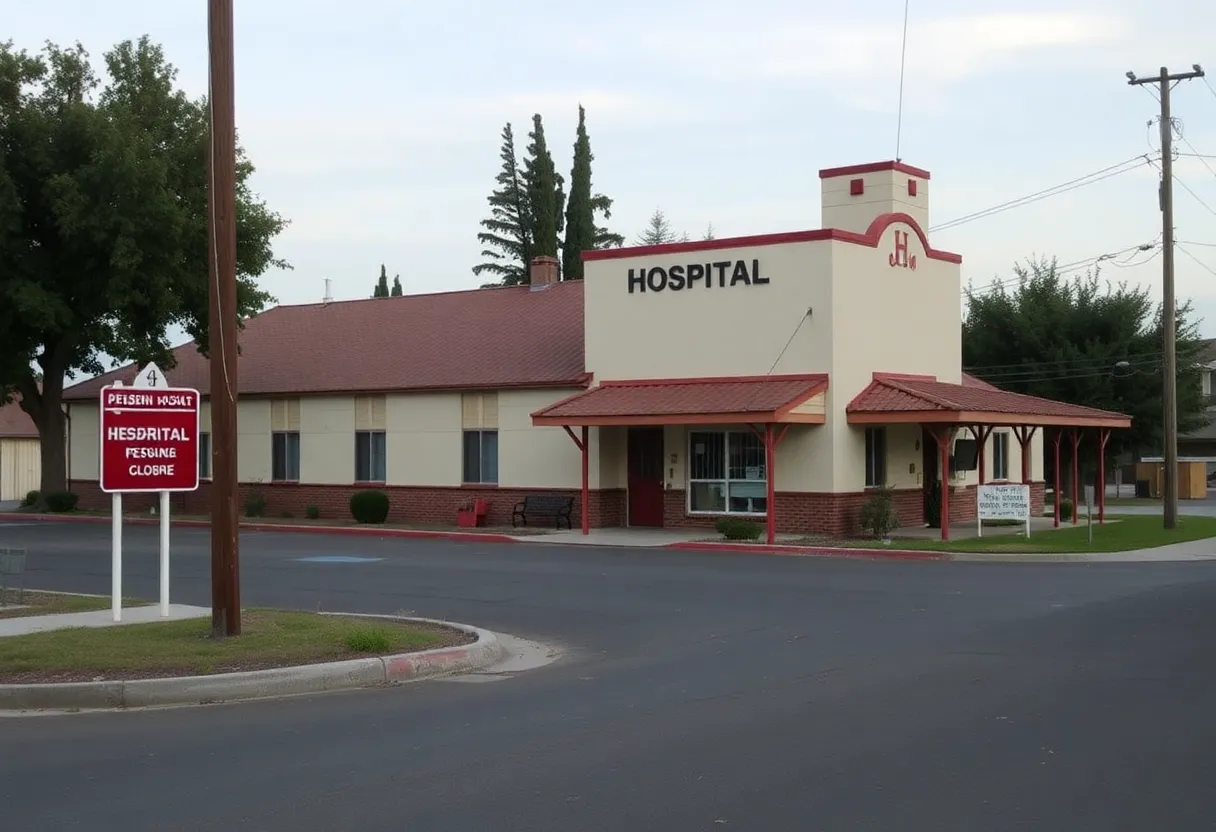News Summary
California is grappling with a significant healthcare crisis, as six rural hospitals are at immediate risk of closure due to proposed Medicaid cuts. This alarming situation reflects a national trend, with approximately 300 hospitals across the U.S. similarly threatened. The report from the Center for Healthcare Quality and Payment Reform highlights the integral role of Medicaid in supporting these facilities, crucial for rural communities relying on limited healthcare services. The closure of these hospitals could lead to increased travel distances for medical care, severely impacting public health and local economies.
California is facing a critical healthcare crisis, as six rural hospitals find themselves at immediate risk of closure. This alarming development is part of a broader national trend, with approximately 300 hospitals across the country similarly threatened. The Center for Healthcare Quality and Payment Reform has released a report detailing the potential ramifications of proposed cuts to Medicaid outlined in the recent House Republican budget bill, which could have devastating consequences for vulnerable communities reliant on these healthcare facilities.
Medicaid serves a vital role in maintaining hospital operations, especially in rural areas where residents often depend on public insurance for their healthcare needs. Currently, California has 58 rural hospitals, of which the six at immediate risk account for over 10%. Meanwhile, a total of 23 rural hospitals in the state face threats from the proposed Medicaid reductions. This could exacerbate an ongoing crisis, as nearly 700 rural hospitals—approximately one-third of the national total—are reported to be in precarious financial situations.
According to the 2020 Census and American Community Survey, about 66 million Americans live in rural areas, making up around 5.8% of California’s population. Healthcare services in these regions are often limited, with many rural hospitals being the only providers of essential services, including laboratory tests and primary care. If these hospitals close, residents may be forced to travel significant distances—up to 90 minutes or more—for medical attention. This inconvenience not only puts their health at risk but also places enormous strain on already overwhelmed urban healthcare systems.
Financial pressures have already led to measurable service reductions in California, with approximately 44.8% of the state’s rural hospitals—26 facilities—having already cut services due to these strains. Since 2005, almost 200 rural hospitals across the United States have shut down, including eight in California. This trend has resulted in millions of individuals losing access to essential medical services like emergency care and inpatient treatments, which are typically more available in urban settings.
Another critical aspect of this crisis is its impact on maternity services. Over the past decade, California has seen the closure of more than 50 labor and delivery units due to financial woes and staffing challenges. This has led to a 21% decline in available maternity units, raising concerns about accessibility for expectant mothers. Approximately 40% of births in California are funded through Medicaid, which is vital for the economic viability of maintaining these services. Projections indicate a shortage of over 1,100 OB-GYNs in the state by 2030, making the situation even more precarious.
The ramifications of closing rural hospitals extend beyond individual health. Such closures threaten to undermine local economies, particularly in regions heavily reliant on agriculture and energy production. Many rural hospitals provide critical support for these sectors and are integral to maintaining both public health and the broader economic infrastructure in their communities.
Rep. Mike Thompson, representing California’s Fourth District, has voiced concern that proposed cuts of $715 billion to Medicaid would jeopardize the stability of rural hospitals and strip health coverage from an estimated 13.7 million Americans. The report emphasizes that most at-risk facilities are situated in isolated communities, making their potential closure particularly alarming.
As the landscape of healthcare funding evolves, rural hospitals are being urged to adopt innovative solutions, such as telehealth and collaborative care models, to mitigate workforce shortages and maintain maternity services. Without significant interventions and protection against proposed funding cuts, the ongoing crisis in California’s rural healthcare system is set to intensify, posing a dire threat to the well-being of thousands.
Deeper Dive: News & Info About This Topic
- Patch: 6 CA Hospitals at Immediate Risk of Closure
- Wikipedia: Rural Health
- New York Times: Maternity Wards Closing
- Google Search: California hospital closures
- Los Angeles Times: California Hospitals Scramble on Earthquake Retrofits
- Encyclopedia Britannica: Healthcare Crisis
- Reuters: Divided Court Tosses Rule Boosting Rural Hospitals’ Medicare Payments
- Google Scholar: Rural hospital financial issues

Author: STAFF HERE HOLLYWOOD
The Hollywood Staff Writer represents the experienced team at HEREHollywood.com, your go-to source for actionable local news and information in Hollywood, Los Angeles County, and beyond. Specializing in "news you can use," we cover essential topics like product reviews for personal and business needs, local business directories, politics, real estate trends, neighborhood insights, and state news affecting the area—with deep expertise drawn from years of dedicated reporting and strong community input, including local press releases and business updates. We deliver top reporting on high-value events such as the Hollywood Bowl summer concerts, the Hollywood Christmas Parade, film premieres at TCL Chinese Theatre, and festivals at the Magic Castle. Our coverage extends to key organizations like the Hollywood Chamber of Commerce and Visit Hollywood, plus leading businesses in entertainment, dining, and tourism that define the local economy. As part of the broader HERE network, including HERELosAngeles.com, HEREBeverlyHills.com, HEREAnaheim.com, and HEREHuntingtonBeach.com, we provide comprehensive, credible insights into Southern California's dynamic landscape.





